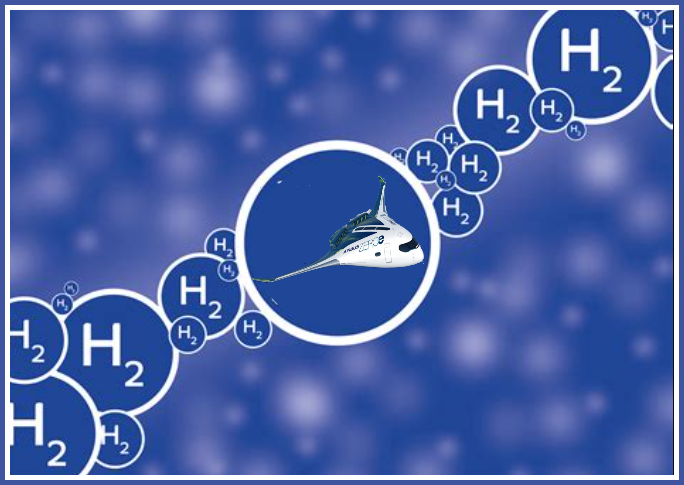(possible model)
Boeing has reported a $2.2B loss in 2023, a deficit driven by its Max’s debacle. That is at best a short term assessment of the consequences of this absurd blunder. In strategic terms, the Arlington, VA/Chicago, IL/ Seattle, Washington company has opened the door for competitors to enter the global aerospace market. The sounds emanating from Toulouse, FR are cheers by the people of Airbus; their orders are exploding due to Boeing’s loss of consumers’ (both airlines and passengers) credibility. The Peoples Republic of China now sees greater opportunities for its new passenger aircraft. São José dos Campos, home of Embraer, must feel fortunate that its government prevented its proposed transaction with Boeing, because now air carriers now greet their sales force team at the front door.
Those are predictable and extremely damaging results, but the news below—that Japan’s METI is investing $33B in the development of a Next Generation passenger aircraft. Next Generation will likely incorporate advances in technology from automative, space and energy. MITI mentioned that Japan has been a supplier of many aerospace structures, systems, and avionics—that is, it already knows the field. The big aspect of this MITI initiative is that their airliner design will be powered with hydrogen—a huge advantage in the race to Zero Carbon goals. This ingenious island country already has demonstrated its ability to turn engineering research into real application. TODAY’S News : MHI Ramps Up Hydrogen Production with New SOEC Tech at Takasago Hydrogen Park.[1]


Though the FAA and the Japanese Civil Aviation Board (under the Ministry of Land, Infrastructure, Transport and Tourism (MLIT) have a long and strong airworthiness relationship (BASA), the introduction of a new design will test the FAA. Folks with certification experience will be useful in moving a Part 25 TC application towards approval.

++++++++++++++++++
Japan Plans To Make A New Passenger Plane Again After SpaceJet Cancelled
PUBLISHED MAR 28, 2024
The new jet concept could debut in the mid-2030s.

- collaboration approach.
Japan has not produced a homegrown commercial aircraft in h
lJapan has unveiled ambitious plans to launch a next-generation passenger jet in a project that could exceed $30 billion in investment. The new aircraft would not run on traditional jet fuel but utilize alternative energy sources like HYDROGEN.
Japan to develop new commercial airliner.

Following the formal termination of its Mitsubishi SpaceJet program last year, Japan will focus on developing a next-generation jet capable of sustainable flight. A MINISTRY OF ECONOMY, TRADE, AND INDUSTRY (MITI)[2] statement says the project will utilize “new environmental technologies” including hybrid-electric or hydrogen.

Photo: CHIYODA I | Wikimedia Commons
Additionally, unlike the SpaceJet program spearheaded by a single firm in Mitsubishi, the new project will be a collaborative effort between multiple companies, including players from the automotive, space, and energy industries. Many of SpaceJet’s failures were due to the project’s single-company focus, leading authorities to favor a public-private model involving several firms. As a technologically advanced country already home to leading aircraft component suppliers, Japan is well-placed to lead the push for a sustainable commercial airliner.
As reported by France24, Kazuchika Iwata, Japan’s State Minister for Economy, Trade and Industry, said,
“For the Japanese aircraft industry to achieve sustainable growth, we cannot stay satisfied with our position as a parts supplier. In the new business fields of carbon-neutral technologies, including hydrogen, we aim to take a leading position.”
The proposed aircraft would have an entry-to-service date of around 2035 and could receive a combined 5 trillion yen ($33 BILLION) INVESTMENT. No details have been confirmed on what size of aircraft the concept will be, but it is likely to be a regional narrowbody like its failed predecessor, the SpaceJet. This project ended up being a financial disaster, blowing over ¥1 trillion ($6.6 billion) in development costs – with plans to introduce the narrowbody jet to service as early as 2013, massive delays and technical problems eventually led to the program’s demise in February 2023.

+++++++++++++++++++
[1] Solid Oxide Fuel Cell technology, setting itself apart with its proprietary tubular cell stack which supports high-pressure operations. The 400 kW test module has been working towards optimizing output and capacity, with the results of the research supporting further development. The SOEC test module features a module with multiple cartridges of 500 cell stacks. Test results confirmed an electrolytic efficiency of 3.5 kWh/Nm³ (101%-HHV (higher heating value)), bringing MHI a step closer to its ambitious goal of achieving an overall system efficiency of 90%-HHV.
[2] Since 2001, METI expanded its jurisdiction and received reinforced political support. It faced demands to enhance Japanese firms’ viability in the face of new competitive pressures and security threats from China, Korea, and even the United States. In some cases, METI bailed out failing firms, while in others (like the automobile industry), it made significant contributions without receiving due credit METI’s role remains crucial in navigating global challenges and supporting Japanese firms. Source: CoPilot






